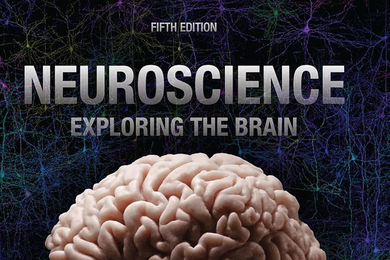The catastrophic potential of an avian flu pandemic ranks just below that for thermonuclear war, and our global lack of preparedness for just one wave of this fierce virus promises death to millions, a Pulitzer Prize-winning author warned at a talk held on Monday, Sept. 26, at 3 p.m. at the Dibner Institute.
Laurie Garrett, senior fellow for global health at the Council on Foreign Relations, delivered her talk, "The Scientific, Health and Political Implications of an Avian Flu Pandemic," to a rapt audience.
A former science reporter for National Public Radio and for New York Newsday, Garrett won the Pulitzer Prize and the Polk and Peabody awards for her writing on global health systems and infectious diseases. She is the author of "The Coming Plague: Newly Emerging Diseases in a World Out of Balance" and "Betrayal of Trust: The Collapse of Global Public Health."
Garrett described the avian flu virus, known to scientists as H5N1, in all its pernicious power. She traced its roots to Guandong, China, "stewpot of Asia" and birthplace of SARS, where live animal markets and human and animal migration confound surveillance, record-keeping and disease containment.
H5N1 originated in migrating aquatic birds whose normal flyways traverse China. The virus occurred in chickens as the forces of increased prosperity -- more demand for chicken and more chicken farms -- reduced habitat along the migratory flyways, landing infected birds among their vulnerable domestic cousins. H5N1 is 100 percent lethal to chickens.
To date, more than 300 million chickens have been culled or killed in an attempt to contain the virus. Meanwhile, human-to-human transmission has been confirmed in Thailand and Vietnam, where it has been 55 percent lethal, so far.
H5N1 is particularly, swiftly lethal to healthy humans under the age of 35, Garrett noted, for the same reasons the young were most vulnerable to the pandemic virus of 1918: they lack the antibody protection afforded to older humans who have survived earlier viral attacks.
A mordant wit, Garrett remarked to those present, "Students, you are in the target age group!"
In addition, she said, "The human immune system finds this virus so deeply foreign that it goes all out in its response. There's tremendous collateral damage."
Garrett also warned that medicine to manage any avian flu damage barely exists. Only nine countries in the world have the capacity to produce vaccine, and surely the wealthy nations will serve their own people first.
Currently, the only factory producing Tamiflu, a medicine that mitigates flu symptoms, is in Switzerland. Garrett, a woman whom one can easily imagine out on the tarmac, warned that unions and pilots won't fly if there's a pandemic, leaving the job of extricating Tamiflu from Switzerland to the U.S. Air Force.
Her vision of international relations in the context of pandemic flu and scarce medicine evoked the direst scenes of dystopian fiction.
She challenged the group to imagine, "Say you're Switzerland and there's a pandemic. You're going to grant permission to the USAF to land and take Tamiflu back to the U.S.? And what if the U.S. does have Tamiflu or a vaccine? What about our neighbors to the south? What relationships will we -- or any of the wealthiest nations -- have with the other 190 countries in the world AFTER the pandemic is over?"
Neither Garrett nor discussant Marc Lipsitch, an epidemiologist at the Harvard School of Public Health, offered containment, as in quarantines or border closings, as a silver lining in H5N1's menacing cloud.
The World Health Organization (WHO) "needs 14 days to mobilize, while Vietnam takes six weeks to report a case. Meanwhile, people with flu can be contagious and asymptomatic; air travel and border crossings persist, and health-care infrastructure doesn't exist in many places. Reluctantly, Washington, D.C., agencies are concluding that containment is not possible," she said.
For Garrett, a recent transparency agreement signed by President Bush and Hu Jintao, president of China, signals acknowledgement of H5N1's global threat. But national politics still need awakening if we -- and our world -- are to be ready.
A resident of Brooklyn, Garrett described New York City as more pandemic-ready than most, a lesson from 9/11.
"We've been through a lot. The New York plan assumes an attack rate of 15 to 25 percent with 1.2 to 2.8 million people infected, 6,000 to 280,000 people requiring hospitalization and deaths ranging from 12,000 to 114,000," she said. At least, there's a plan.
But the lessons of 9/11 have backfired on the federal level, skewing research and development of vaccines towards smallpox and anthrax -- the bioterror threats to homeland security -- rather than the incalculably more dreadful H5N1. Thus medical supplies are mortally scarce.
Garrett was frankly skeptical of politicians' grasp of what she believes is an impending pandemic, and she brushed fashionable debates aside in one stroke. "This is biology. If you don't believe in evolution, you can't understand it," she said.
A version of this article appeared in MIT Tech Talk on October 5, 2005 (download PDF).






